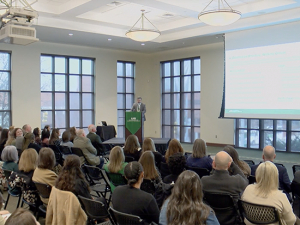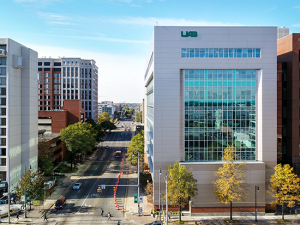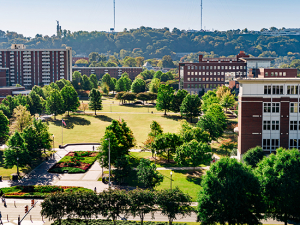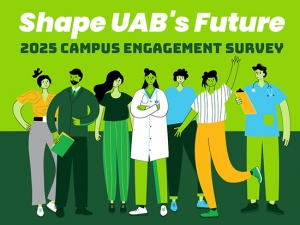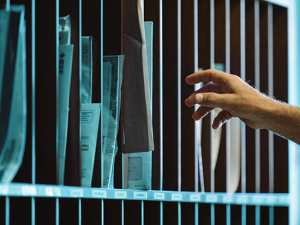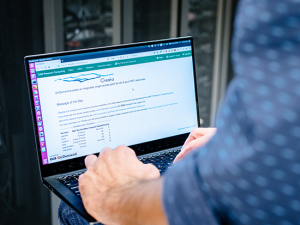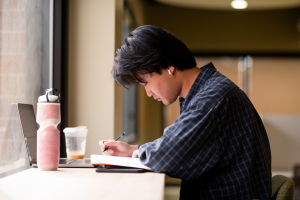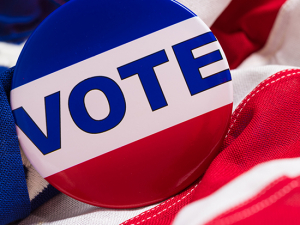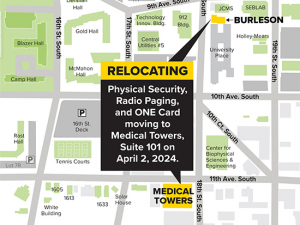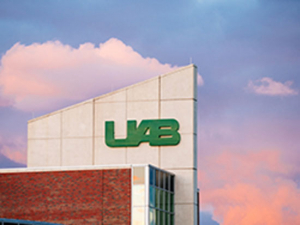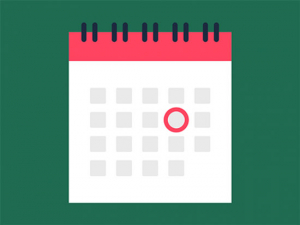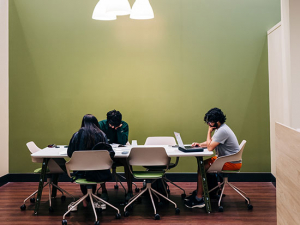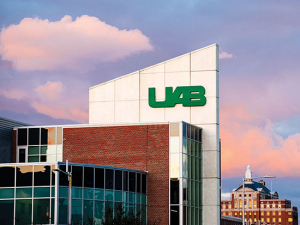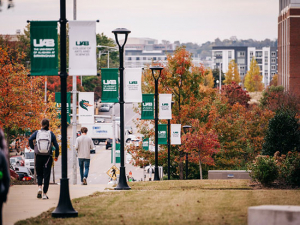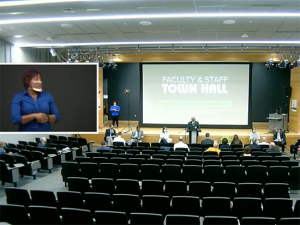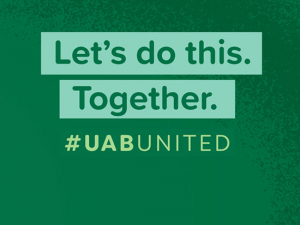Editor’s Note: The information published in this story is accurate at the time of publication. Always refer to uab.edu/uabunited for UAB’s current guidelines and recommendations relating to COVID-19.
Following the faculty and staff town hall Jan. 12, senior leaders have responded to questions submitted online that could not be addressed live due to time constraints. Questions submitted and answered in the town hall’s live chat are also published below. Watch the full town hall here:
Scroll down to read the complete summary, or use the links below to jump to specific topics
COVID prevention, treatment and outlook
Future surges, herd immunity and other epidemiology questions
Exposure to COVID at work and home
Other Employee Health questions
Minimum wage and hiring questions
Compensation and financial questions
Facilities – cleaning and air flow
COVID prevention, treatment and outlook
Boosters and vaccinations
When can we expect UAB vaccine clinics to offer COVID booster shots for 12- to 15-year-olds?
Boosters are available for 12 years and older now.
Use the links below to jump to comments from specific town hall speakers:
- President Ray Watts
- Tapan Mehta, Ph.D., chair, Faculty Senate
- Holly Holiday-Jones, chair, Staff Council
- Selwyn Vickers, M.D., dean, Heersink School of Medicine
- Jeanne Marrazzo, M.D., director, Division of Infectious Diseases
- Suzanne Judd, Ph.D., epidemiologist and professor in the School of Public Health
- Sarah Nafziger, M.D., director, Employee Health
- Provost Pam Benoit
- Brian Burnett, Ph.D., senior vice president, Finance & Administration
- Janet May, Chief Human Resources Officer
Why does UAB not require employee vaccination? Will UAB require vaccination in the future?
Alabama law prohibits UAB (outside of UAB Medicine) from enforcing any COVID-19 vaccination mandate, and the federal regulations overriding this Alabama law and providing for a COVID-19 vaccination mandate have been suspended by a federal court. Therefore, UAB cannot enforce a vaccination mandate at this time. That said, we encourage employees to get vaccinated and upload their documentation to Employee Health so we will be in compliance if the injunction is lifted on the federal mandate.
Is UAB considering requiring COVID boosters?
COVID vaccine boosters are safe, effective and available to UAB employees and students. (For more information, see this page on the UAB United site.) However, boosters are not required at this time. UAB continues to monitor court decisions around federal vaccine mandates. The U.S. Supreme Court upheld the executive order requiring COVID vaccines for workers at health care facilities that receive Medicare or Medicaid dollars. UAB is reviewing the details of the ruling and will provide updates and guidance to UAB Health System employees in the coming days.
Are students being encouraged to get and/or offered boosters this semester?
Yes, students are encouraged to get boosters, and both Pfizer and Moderna vaccines are offered at Student Health Services.
Will there be information for another booster? I saw that the CDC recommends another booster for immunocompromised, asplenic, etc.
QUESTION ANSWERED IN CHAT DURING TOWN HALL: We don’t know yet. This will depend on two main things — first, whether emerging new variants (after omicron), which many feel are inevitable (sorry!) are covered well by the existing vaccines, and second, how durable (long-lasting) the immunity from these vaccines is. For the latter, you may have seen that the CDC shortened the period to the Pfizer booster to five months to address what we think is probably the window of protection after vaccination (about five months).
Where are the boosters being given?
QUESTION ANSWERED IN CHAT DURING TOWN HALL: You can schedule your injection and find more information at uabmedicinevaccine.org.
How soon do UAB physicians think we can/might be able to get a fourth booster?
QUESTION ANSWERED IN CHAT DURING TOWN HALL: In short, we don’t know for sure but will follow guidance from the FDA/CDC when booster guidance is updated.
Is there any news about vaccinations for children under age 5? This is my biggest worry for my family, bringing COVID home from the office and infecting our kids.
QUESTION ANSWERED IN CHAT DURING TOWN HALL: We anticipate results of clinical trials soon, but I agree that it’s not soon enough!
[back to topic list]
Medical questions
Does having the omicron variant of COVID protect you from getting it again, i.e., shouldn’t you have antibodies against COVID from having the virus?
QUESTION ANSWERED IN CHAT DURING TOWN HALL: We don’t know for sure. It will take about six months to definitively answer that question. But based on what we have seen with other variants, no. It is not likely the immunity that occurs from infection will provide lasting immunity to SARS-CoV-2.
How is the new variant impacting small babies who are unable to get vaccinated?
QUESTION ANSWERED IN CHAT DURING TOWN HALL: Unfortunately, we are seeing some of the highest numbers of pediatric hospitalizations with omicron since the pandemic started. We think it is partly due to omicron’s being so common and so infectious, and partly due to the fact that we have no vaccine for younger children. Yet.
I might have had COVID, but I wasn’t tested a couple weeks ago. I’m boosted. Can I catch it again soon? I mask everywhere and don’t go out much. Still want to know my risk.
QUESTION ANSWERED IN CHAT DURING TOWN HALL: It is definitely possible to become infected with COVID after a previous infection and/or being vaccinated. But the risk of severe hospitalization and death is very low if you are boosted.
How do we get our immunocompromised, immunodeficient patient the prophylactic monoclonal [antibody mentioned by Dr. Marrazzo]?
QUESTION ANSWERED IN CHAT DURING TOWN HALL: Please see the UAB One page, where we have guidance for medical therapy and prevention of infection including the use of Evushield, the drug you mention.
I wanted to make sure I heard Dr. Nafziger correctly: Is the anti-SARS-CoV-2 monoclonal antibody infusion treatment Sotrovimab being offered at UAB for severely immunocompromised patients? Please advise.
QUESTION ANSWERED IN CHAT DURING TOWN HALL: It is, and we have developed detailed guidance for its use and prioritizing it. The challenge is supply: We got 16 doses last week only, and they have been used. We are waiting on allocation of a new supply (no idea how many doses we will get) sometime this week. It’s very frustrating.
Are people taking immune-modulating drugs considered “immunocompromised”? I am thinking about the treatment for multiple sclerosis.
QUESTION ANSWERED IN CHAT DURING TOWN HALL: Very often, yes, that is the case. I would definitely check with your physician on this, especially because nearly all the MS drugs suppress the immune response.
Can someone talk a little bit more about “long COVID”?
QUESTION ANSWERED IN CHAT DURING TOWN HALL: Long COVID is a constellation of signs and symptoms ranging from severe fatigue to persistent lung problems (cough, shortness of breath), to “brain fog,” to instability in heart rate and blood pressure making people feel faint at times. We are studying this in the RECOVER study, and just enrolled our first participant in this study on Monday. We hope to learn a lot more with this very large study that is funded by NIH and will follow people over four years. Feel free to contact me [Dr. Jeanne Marrazzo] if you want to know more.
What does the data indicate for the long-term brain and organ damage from mild cases? A bad cold does not cause brain damage. Sending the message that it is “mild” makes people think it is not a serious disease.
QUESTION ANSWERED IN CHAT DURING TOWN HALL: Great question. Please see my response to the question about long COVID earlier [above]. One of the things we really need to understand is whether “long COVID” occurs with the same frequency with omicron as it did with delta. I hope it’s not, but we are actively enrolling people who had/have infection with both of these variants and following them to find out.
[back to topic list]
Future surges, herd immunity and other epidemiology questions
What about natural immunity by infection for COVID-19 and its benefits to reaching herd immunity?
Lasting herd immunity is not likely to happen for this particular virus. There are two reasons for this. First, the virus mutates and outsmarts the immune system more often than we originally thought would be the case. Second, the immunity that the body mounts to the virus (natural immunity) and/or the vaccine does not last as long as was originally believed. Because of those two things, we will not observe true herd immunity with SARS-CoV-2. We might observe short-term herd immunity (the valleys of the surges), but we will likely continue to see surges in cases at various times in the future.
With omicron cases peaking in the next couple of weeks in Alabama and then going down, can we expect another surge of a different variant and this just being a continuous cycle?
QUESTION ANSWERED IN CHAT DURING TOWN HALL: Based on what we have observed with SARS-CoV-2 surges in the past, yes, it does look like this will be a continuous cycle. These types of cycles are typical of viruses that are endemic. Endemic just means that the virus is always there and can feed an epidemic or surge.
If this is endemic, what will change (or need to change) in society to keep everything functioning?
QUESTION ANSWERED IN CHAT DURING TOWN HALL: These are exactly the conversations starting to happen in public health. If it is endemic and continues to have very low rates of hospitalization and death, we will probably see something similar to the way we manage influenza. But those conversations are still ongoing.
With the omicron variant, what percentage of hospitalizations are from issues other than COVID symptoms, and the patient just happened to have COVID?
QUESTION ANSWERED IN CHAT DURING TOWN HALL: At UAB and at some other hospitals we’ve talked with, it looks like about 30%-40% of the COVID infections are detected on routine screening at admission. We don’t know yet whether these infections would have “blossomed” eventually, or would never have been noticed at all.
[back to topic list]
Workplace and exposure
Masking
What are the latest masking requirements for individuals who share an office or large space, but are able to be 3-6 feet away from each other?
UAB will continue to require masks indoors to start 2022 and the spring semester regardless of vaccination status. Please continue to review the UAB United site for current guidelines.
There are limited times when individuals can be unmasked indoors on the university campus (exceptions may not apply to clinical buildings — please continue to follow established protocols for clinical buildings).
- Employees can unmask if alone in a private workspace (e.g., office or cubicle)
- Students can unmask in their residence hall room
- Individuals can briefly unmask while actively eating or drinking if a minimum of 6 feet of social distancing can be maintained
We will continue to monitor key data with public health and infectious disease experts and update this temporary guidance as necessary.
Previously, masking was not required when in your own cubicle. Is this guidance still the same, or should we adjust now based on the high transmission rates? Thanks!
That guidance has not changed. Employees are permitted to unmask when alone in a workspace such as an office or cubicle. When someone enters or when you leave your workspace (e.g., to walk down the hall, visit the copier, etc.), you are expected to put on your mask.
What criteria must be met before classes can be mask-free?
When Jefferson County reports weekly COVID-19 cases of 50 per 100,000 or less and sustains this level for two weeks, CDC guidelines state that vaccinated individuals can remove their masks.
Mask compliance in classrooms seems very good, but at the Rec Center it is dreadful. Any hope of enforcing mask compliance at the Rec Center where many people are breathing heavily and are very active?
QUESTION ANSWERED IN CHAT DURING TOWN HALL: These concerns have been shared with the director of Campus Recreation and his supervisor. This will be addressed. Thanks for sharing.
Is it OK for employees to unmask and eat alone at their desk, or should they eat outside of the office alone?
QUESTION ANSWERED IN CHAT DURING TOWN HALL: This is really a question of how much risk you are individually willing to entertain. Eating alone in your office is a low-transmission activity. Eating outside alone would also be a very low-transmission activity.
Will we get new UAB-branded masks?
UAB-branded masks are available in many locations on campus. Inquire within your school or department as to availability.
[back to topic list]
Masks – Athletics-specific
With incidences of COVID within our basketball teams, will they continue to be allowed to play unmasked?
Yes. We will continue to follow safety guidance and protocols developed for college athletics, including CDC, NCAA and C-USA guidelines regarding return-to-play activities. Guidelines have been created by a medical advisory team composed of doctors and trainers from around the country, which includes our very own Dr. Marrazzo.
We are longtime season-ticket holders. We have stopped going to basketball games because of how few people are wearing masks. Can masks be available at all entrances?
Yes. Masks are being provided to anyone who does not have one when entering the building. Athletics has also dramatically increased messaging via the video board, public address announcements and signage to align with revised campus and national policies.
[back to topic list]
Exposure to COVID at work and home
I’ve had several students (this semester and last) that say they are positive, but I haven’t received notification from Student Health. Is that OK?
This most often indicates that the student has not shared that information with Student Health Services through the Student COVID Screening Survey available on the Patient Portal. I recommend encouraging students who share that information with you to please complete the Student COVID Screening Survey and upload their COVID test through their Patient Portal immediately, if not already done. Also, if they indicate that this has already been completed, please have them contact Student Health Services to discuss.
If an employee’s spouse or child is exposed to COVID, should they quarantine?
Close contact is defined as exposure to someone less than 6 feet away for 15 minutes or longer. If you are experiencing ongoing close-contact exposure in a circumstance where you cannot isolate from the person who is COVID-positive (e.g., you are caring for a young child who is COVID-positive or you sleep in the same bed with a person who is COVID-positive), then the date of last exposure is at the end of that person’s infectious period, which is usually 10 days from the onset of their symptoms. The first step after close-contact exposure is to report this to Employee Health through the Employee Exposure or Experiencing Symptoms Form.
With that said, who DOES have to quarantine after close-contact exposure?
If you had a close-contact exposure (see definition above) to a person who is COVID-19-positive AND
- You are NOT vaccinated for COVID-19
- AND
- You are NOT a health care worker
You must remain at home (quarantine) for five days from the date of last exposure. It is your responsibility to communicate this quarantine requirement to your supervisor. If you develop symptoms, you will need to self-isolate and be tested for COVID-19. It is very important that you wear a mask when you return to work. We recommend that all employees who have a close-contact exposure but remain asymptomatic be tested at three to five days after the date of last exposure.
Who does NOT have to quarantine?
If you had a close-contact exposure (see definition above) to a person who is COVID-19-positive
AND:
- You are vaccinated for COVID-19
- OR
- You are a health care worker
You do NOT have to quarantine and may return to work if you remain symptom-free. If you develop symptoms, you will need to self-isolate and be tested for COVID-19. It is very important that you wear a mask when you return to work. We recommend that all employees who have a close-contact exposure but remain asymptomatic be tested at three to five days after the date of last exposure.
If you did NOT have a close-contact exposure and have no symptoms, you can return to work now and do not need to be tested.
On breakroom transmission, at Volker Hall, it is impossible to social distance during lunch. We have one small break/eating room for approximately 50 employees. People can’t eat in research labs. Any suggestions on how to keep employees safe?
There are many places on campus — indoors and outdoors — where students and employees can comfortably eat and maintain social distance. Near Volker Hall, the Hill Student Center is a good option.
What is the policy for workplace exposure? Does UAB notify the group of people who were exposed when they know of the exposure event? If someone tells you they have COVID and were unmasked in a group at work, but did not tell anyone at work, how should this be reported?
If you have been in close contact with someone who has COVID-19 (close contact is defined as exposure to someone less than 6 feet away for 15 minutes or longer), the first step is to report this to Employee Health through the Employee Exposure or Experiencing Symptoms Form. Employee Health will provide guidance and facilitate appropriate follow-up.
Has the definition of an exposure changed with the increased contagious nature of the omicron variant? It used to be 15 minutes, etc. What is the current guidance?
QUESTION ANSWERED IN CHAT DURING TOWN HALL: The CDC still uses that 15-minute timeframe (actually, within 6 feet of an infected person for a total of 15 minutes or more over a 24-hour period, so three five-minute periods count) to define close contact, even with the knowledge that omicron is even more infectious than delta.
As a parent of a child under 5, childcare facilities are wanting parents to keep children home if they have ANY viral symptoms (e.g., runny nose, sneezing, cough, congestion, etc.). As young children get lots of colds/viruses beyond COVID, what does UAB recommend to their employees with young children and how best to handle these situations?
QUESTION ANSWERED IN CHAT DURING TOWN HALL: Thank you for your question. Please work directly with your manager. If remote/hybrid or an adjusted schedule is an option for the duties you perform, they will work with you during the surge. If you have further questions, Human Resources is here to help. Just reach out to us.
What about employees who are also attending courses? Can there be an online/virtual option to reduce employee exposure?
QUESTION ANSWERED IN CHAT DURING TOWN HALL: Sitting masked in a classroom next to other individuals who are masked would not be considered a high-risk activity. The risk of transmission in that setting is not higher than the risk of transmission in a general office setting.
The COVID-positive employees in my unit who are coming back after their initial quarantine are still displaying symptoms (coughing), but now seem to be wearing two masks. Is this enough to keep me safe?
QUESTION ANSWERED IN CHAT DURING TOWN HALL: These employees should not return if they are experiencing symptoms that could potentially represent infectiousness. Coughing counts for this.
[back to topic list]
Experiencing symptoms
Let’s say you test negative on a Monday and remain sick for over a week; do you test again? How do you know when to test if you have been sick for days and you are not aware if you have been around an infected person?
QUESTION ANSWERED IN CHAT DURING TOWN HALL: I would consider re-testing if your symptoms change or worsen, or if you have a known high-risk exposure. There are also other viruses circulating in our community that can cause illness very similar to COVID.
What if you tested negative but still have symptoms?
QUESTION ANSWERED IN CHAT DURING TOWN HALL: Many other viruses can cause symptoms similar to COVID. As always, we ask that you stay home if you have symptoms of transmissible infectious disease. We don’t want to share COVID with our colleagues, and we don’t want to share the common cold or flu!
[back to topic list]
Testing
Is UAB Highlands the only place on campus where employees can get tested for COVID, and is an appointment required?
Yes, it is the only location for testing on campus. No appointment is required right now. Employees who are experiencing COVID symptoms or had a COVID exposure MUST complete the Employee Exposure or Experiencing Symptoms Form. After completing the form, those who are symptomatic should go to the UAB Hospital-Highlands parking deck testing site for a COVID test. It is open Sunday-Friday from 7:30 a.m. to 2 p.m. You do not have to wait to be contacted by Employee Health to get tested. Those without symptoms should follow guidance from Employee Health about possible testing.
Employees are given priority in testing. How about their family members?
At present, employees and UAB patients are prioritized for testing.
[back to topic list]
Returning to work after COVID
What if no one from Employee Health has been able to contact you after letting them know you have symptoms, to let you know if you can return to work? Prior to employees’ being able to be tested without an appointment, supervisors have asked employees to return to work before getting the go-ahead from Employee Health.
QUESTION ANSWERED IN CHAT DURING TOWN HALL: If you report symptoms, you need stay home from work and be tested. Please do not report to work before receiving negative test results or being released by Employee Health.
How do we find the guideline from Employee Health regarding returning to work if you’re immunocompromised and test positive for COVID?
QUESTION ANSWERED IN CHAT DURING TOWN HALL: This is managed with the individual employees based on their medical history and circumstances.
[back to topic list]
Social distancing
Is social distancing no longer considered effective in limiting transmission? Social distancing seems to be down-played now.
The CDC definition of close contact does still include the 6-feet specification, so it’s used to define meaningful exposure to a person with infection. That said, I think most realize that requiring social distancing the way we emphasized it in the early days of the pandemic is simply not consistent with the need and desire to get people back to some semblance of normal.
If we are not social distancing in classes, sporting events and other large gatherings, why are we requiring social distancing and reduced houses for performances in the ASC and other performance venues on campus?
Masked classrooms are considered a low-transmission setting where people wear masks and speak in normal voices, not yelling or singing. UAB has data from our own contact tracing in the classroom (in addition to data from other employers such as airlines and theater groups) that have consistently demonstrated nearly zero transmission in classroom settings. As for sporting events, attendees should be masked and socially distanced since people are likely to yell and shout. However, UAB has yet to document transmission from indoor sporting events when the audience is masked.
[back to topic list]
Other Employee Health questions
How will we track community spread on-campus? Is it possible that we will bring back the daily Healthcheck and/or sentinel testing?
We monitor COVID data among students and employees daily, and public health and infectious disease experts discuss data regularly with university and UAB Medicine administration.
[back to topic list]
Human Resources
Working remotely
Could we please have an update on the hybrid pilot program? Will those who have participated in the first round be expected to return to the office full time after February and the six months are up? What will the next phase be?
The Remote Work Pilot is continuing through May 2022. The fall semester saw many administrative units’ participating in the pilot. This spring, many of the schools are participating. For those who began participating in the fall, a touch point survey is being sent to the employees and their managers to garner additional feedback on the pilot. The final report of the result of the program will be presented to the Board of Trustees, and next steps will be determined.
What do we do if our supervisor refuses our participation in the pilot study? Can you give us more information on the pilot since our department is not relaying information or taking the pandemic seriously?
QUESTION ANSWERED IN CHAT DURING TOWN HALL: Thank you for your question. Please feel free to reach out to Earlisha Williams, executive director, Employee Relations, at esteele@uab.edu. She will be able to assist you with your individual questions.
Will a remote/hybrid allowance be granted for those with young children if K-12 schools are moved to a virtual format?
Providing in-person services for our students, faculty, staff and community is key. We, like many other higher-education institutions, are coming back to the office and allowing for flexibility. While in the surge, managers have the flexibility to move their teams to hybrid and/or remote work for a short period of time, regardless of participation in the Remote Work Pilot program, by working with their appropriate dean, VP or AVP.
I am uncomfortable being at work in my specific area as I encounter individuals who are exposed to COVID patients. How supportive is the university of employees who would rather work from home until the surge passes over the next few weeks, especially those who are autoimmune-compromised who are still working in their respective spaces?
Providing in-person services for our students, faculty, staff and community is key. We, like many other higher-education institutions, are coming back to the office and allowing for flexibility. While in the surge, managers have the flexibility to move their teams to hybrid and/or remote work for a short period of time, regardless of participation in the Remote Work Pilot program, by working with their appropriate dean, VP or AVP.
If we are immunocompromised, do we have priority to work from home?
Students, faculty and staff directed to come to campus who have concerns about doing so due a disability or medical condition may contact Human Resources (faculty and staff), the AWARE Program (faculty and staff) or Disability Support Services (students) or work directly with supervisors to determine an appropriate workplace accommodation. Individuals in a high-risk category may be eligible for a reasonable accommodation, leave of absence or other mitigating measures. Please note, however, that fear of contracting COVID-19 is not recognized generally as a valid reason for an accommodation.
Any guidance for immunocompromised employees, given the current surge? It is very difficult and almost impossible to gain accommodations through AWARE.
Students, faculty and staff directed to come to campus who have concerns about doing so due to a disability or medical condition may contact Human Resources (faculty and staff), the AWARE Program (faculty and staff) or Disability Support Services (students) or work directly with supervisors to determine an appropriate workplace accommodation. Individuals in a high-risk category may be eligible for a reasonable accommodation, leave of absence or other mitigating measures. You may also contact your HR Consultant for assistance. Please note, however, that fear of contracting COVID-19 is not recognized generally as a valid reason for an accommodation.
[back to topic list]
Sick time and quarantine
Some of my family members had COVID in the summer of 2020, and I was required to use my sick days to self-quarantine even though my test was negative. I realize the restrictions have changed (e.g., not necessarily required to stay out if negative, now allowed to work remotely, etc.). Can we regain any of the sick days we were required to take?
All employees were required to use benefit time to cover COVID-related absences when remote work was not feasible. Benefit time used to cover these absences will not be restored.
Are employees who have long-haul COVID eligible for sick leave bank donations? What if they are not on continuous FMLA and only on intermittent FMLA? Thank you!
Please refer to the Sick Time Donation Procedure for program eligibility and guidelines, or contact your Human Resources Consultant to discuss your specific situation. Intermittent Leave Absence is not eligible for sick time donation.
What are the current guidelines regarding sick leave and pay when missing work due to COVID-19 exposure and quarantine?
The employee should not return to the work area until cleared by Employee Health. If feasible and employee is able, with supervisor approval, the employee may work remotely. If remote work is not feasible or the employee is too ill to work, the employee may use benefit time until they are cleared to return to work or they may take FMLA, if eligible. See this link for Guidelines for Employees with COVID Symptoms or Exposures.
If you are a new hire, in the event that you get COVID, will you be able to use your sick time?
QUESTION ANSWERED IN CHAT DURING TOWN HALL: Thank you for your question. Employees are eligible to use their sick leave as they accrue the time.
If a new employee has not yet accrued sick time, doesn’t this create a perverse incentive for these new employees to come to work even with minor symptoms? Seems this is a place where flexibility would make sense during COVID if it is not already flexible.
QUESTION ANSWERED IN CHAT DURING TOWN HALL: Thank you for your question. We are allowing managers flexibility with remote/hybrid work schedules. If an employee is COVID-positive and/or has not been released by Employee Health to return to the office, remote work can be an option to assist so long as the employee is well enough to work.
[back to topic list]
Minimum wage and hiring questions
Are there plans for UAB to increase our hourly minimum wage to $15/hour to be in line with other talent competitors and meet the rising cost of living?
UAB is committed to offering a compensation structure that attracts and retains top talent. Effective Jan. 2, 2022, UAB and UAB Medicine raised the minimum wage for full-time regular status employees to $14 per hour. UAB Medicine (i.e., UAB Health System, UAB Hospital, the University of Alabama Health Services Foundation and UAB Callahan Eye Hospital) will raise minimum wage to $15 per hour in July 2022, and the university will raise minimum wage to $15 per hour no later than Jan. 1, 2023, subject to funding availability and University of Alabama System Board approval. UAB will continue to evaluate the market to ensure wages are competitive.
We are having trouble finding candidates for mid- to high-skilled staff positions in administration roles (e.g., research administration). Has there been any thought about piloting some fully remote openings, which will allow to bring talent that may not reside in Birmingham?
I encourage you to work with your school to discuss position eligibility criteria.
Bioinformatics and Computational analysis of big data sets are more important than ever before. Our Scientist and Researcher Career ladders no longer suffice for these positions. The demand for these workers is growing, and the salaries for these positions are rapidly increasing/changing. How will we be able to compete and identify solutions to attracting the best people in this critical arena?
We recognize labor markets have shifted. The university continues to monitor and make adjustments to the research ladders. Additionally, we have been working with hiring managers to develop pooled position postings to allow for more flexibility with the recruitment and selection of candidates.
[back to topic list]
General
Will Blazer Home resume in 2022?
Blazer Home is being assessed to determine next steps. Please stay tuned for more information.
Is there a handbook with clear COVID protocols and guidelines for employees?
The UAB United site is the central source for COVID-related information, including protocols and guidelines. There is a section for employees.
[back to topic list]
UAB Medicine questions
What is being done to fix issues with the food service department? It takes upward of 30 minutes to get someone to answer the phone to place an order, 1.5-2 hours for food to be delivered, and when it does get delivered, the hot things are cold, and the cold things are room temperature. We, as the nursing staff, are taking the brunt of the displeasure from patients and family members.
Thank you for the question and the opportunity to provide an update on of the activity being undertaken to support our Food and Nutrition Services departments. As all are aware staffing has been a challenge and will likely continue to be a challenge over the next year. In addition, even though our patient volumes have increased, including the addition of several service areas, the main kitchen has had limited physical expansion options. Below are many efforts that have been put into place, and at times piloted in an effort to continue to manage our challenges. Some efforts have proved extremely valuable while others have not achieved the outcome anticipated. Most important is the ongoing dedication and determination of the entire Food Service team to our patients, visitors and staff. Below are some of the efforts that have been taken and are in process to address our challenges:
- Increased communication channels to our customers; patients; and internal team on wait times, staffing and other challenges impacting their workflows
- Modified and streamlined patient menu
- Addition of a limited third service tray line in the West Pavilion Kitchen
- Additional food prep location implemented
- Preparation for future meal ordering through a mobile application
- Outside consulting engagement underway for expansion plans and workflow review including technology options for efficiency
- Options to empower our clinical staff to obtain patient meals in emergent situations:
- Piloting shelf stable fresh and shelf-ready food options for clinical teams to offer patients either in off hours or in the event of longer wait times
- New updated food voucher provided to clinical units for patient meal option through the cafeteria
- Continue with after-hours food option through NRC
- New contracted temporary labor services implemented for additional labor support
- Successful hourly wage increase for our entry-level employees
- Successful hourly rate increase for hard to fill positions due to external market options
- Additional incentives for hard to fill shifts or holdover shifts
- Inclusion of all support services into the Helping Hands volunteer program
- Human Resources and Marketing support for hiring fairs, advertising and large group interviews for faster entry into the organization
- Piloted removal of room service back to the traditional food service process of bulk meal delivery at specified times without success
- Implementation of onboarding, orientation and training plan for all new hires
- Movement to increased leadership support across Food Services
Is there anything non-clinical faculty can/should do to help clinical staff if there are staffing shortages due to COVID?
Yes. Anyone who would like to volunteer to assist, please go to helpinghands@uabmc.edu for a quick assessment survey so we can determine where your skills can best be utilized.
[I saw i]n the Medical News yesterday that some medical facilities, hospitals, clinics in the country are allowing their health care workers to remain on the job when testing positive (instead of quarantining). Their justification is the shortage of manpower in health care. Your comments, please.
QUESTION ANSWERED IN CHAT DURING TOWN HALL: This is not being considered at UAB at this time.
If we wear glasses, do we still have to wear a face shield in an outpatient environment without aerosolized treatments?
Yes, face shields provide better coverage than just glasses.
The reports distinguished between hospital cases of vaccinated and unvaccinated. Can you distinguish between (1) asymptomatic and tested positive after they were admitted and (2) admitted for COVID-related issues?
At this time, we are not routinely publishing data on the number of patients who are admitted primarily for COVID symptoms versus those who are admitted for other reasons and test positive for COVID. Both groups of patients must be cared for using more intensive infection control measures and require additional equipment and staffing resources.
Would UAB consider matching retirement contributions for trainees (residents and fellows) like what our peer institutions are now doing?
UAB continually reviews benefit plan offerings to provide a comprehensive program while remaining competitive in the market.
If a symptomatic health care worker discovers s/he is COVID-positive, are patients treated by the worker notified of possible exposure?
Yes, we make every effort to notify patients if they experience a high-risk exposure from a health care worker.
How can we be referred to the Post-COVID program?
People who are 20 days out from a COVID-positive test may be referred to the Post-COVID program. UAB providers can send a message to the Post-COVID program in the message center in Cerner or call 205-975-1881.
Does St. Vincent’s/Ascension Health have clinics similar to the UAB Health Services Foundation?
There are clinics for prime care and subspecialties that are staffed by private physicians.
[back to topic list]
Compensation and financial questions
I heard Dr. Vickers speak about compensating hospital nurses for all the diligent work they are delivering to their patients, particularly during this challenging time. There are also campus nurses who are working just as diligently, and are not being offered this compensation, showing a divide. Please address this issue.
There is no question that many UAB employees and UAB Health System employees have worked very hard during the pandemic in all areas of our missions. What Dr. Vickers was referring to is an acute nursing shortage within the Health System, particularly with those nurses charged with treating patients in the inpatient settings, many of whom are infected with COVID-19. The market for nurses in the hospital setting has changed dramatically during the pandemic, and our health system had to develop and deploy strategies to fill these key roles so we can keep our hospital units adequately staffed. UAB values its on-campus and clinical nurses and works to provide competitive pay and benefits in these areas. It is not possible for all employees with similar titles and responsibilities across the UAB enterprise broadly to be compensated at identical levels. This is no way diminishes our support or appreciation for the work by on-campus nurses.
When does the 3% raise become effective?
The 3% merit increase for UAB campus personnel went into effect Oct. 1, 2021, the start of the new fiscal year for UAB. The Health System merit increases were made Jan. 1, 2022.
As prices increase during the pandemic, and the cost of living continues to go up, is there anyone at UAB looking at giving a cost-of-living raise?
As noted in a previous answer, merit and other increases were recently provided to most employees. There is no funding nor plans at this time to address further increases in our wage scales other than moving our starting wage to $14 per hour on Jan. 1, 2022. We will continue to monitor the situation as we work to build the budgets for fiscal year 2023, which begins Oct. 1, 2022, and we understand that many of our employees face cost-of-living pressures with the inflation rate at its current level. We are also hopeful that these rates will moderate in the coming year but will watch carefully as we build our budget plans in the upcoming year.
[back to topic list]
Academics
Dr. Vickers mentioned a shortage of nurses and respiratory therapists. UAB is training the future generation of nurses. UAB chose to stop training the future generation of respiratory therapists. That was unfortunate. Is there a possibility that UAB will rethink that decision and restart their bachelor-level respiratory therapy training?
In 2011, UAB’s School of Health Professions unveiled a strategic plan that included transitioning suitable undergraduate professional entry-level programs to the M.S. or Clinical Doctorate level. SHP leadership recognized that the respiratory therapy field was not ready to require M.S. degrees for entry-level candidates. In addition, there were sufficient RT programs available at other institutions in Birmingham at the community college and B.S. levels. With these factors in mind, the difficult decision was made to end UAB’s RT program. The current focus for undergraduate programs in the School of Health Professions is on preparation for graduate-level programs and professions. At this time, there are no plans for SHP to restart a bachelor-level RT program.
Why are we suddenly enforcing a rule that removes access to Canvas for administrative assistants in the middle of a pandemic? These administrative supports are critical to our faculty teachers.
Status controls in Canvas have always been in place. Instructors work with the division of eLearning (or the like) to have courses supported. The status of teaching assistant/graduate assistant is a type of access controlled by the school/college. There have not been any changes made to these protocols during the pandemic.
[back to topic list]
Facilities – cleaning and air flow
Could you work on providing more fresh air to buildings — leaving some front doors open during busy times, get some windows opening, etc.? I realize there are building codes to follow, but these are unprecedented times.
That is a good question and one that we have reviewed and considered. The heating, ventilation and air conditioning (HVAC) systems in our buildings are engineered, constructed and controlled to bring in and distribute prescribed volumes of fresh outside air to individual spaces. These HVAC systems are created to work with the doors and windows closed. Leaving doors open could compromise the distribution of fresh air throughout the building. We are running systems on the maximum outside-air setting and following the guidance of the American Society of Heating, Refrigerating and Air-Conditioning Engineers on best practices. Feel free to reach out to discuss the specifics of your building.
Can you please share any changes that have been made in the housekeeping or cleaning protocols in the classrooms or common areas for this omicron variant?
Building Services will continue its enhanced cleaning protocols for cleaning methods and frequency while using appropriate personal protective equipment. Classrooms, workspaces, door handles, railings, restrooms, break rooms and other frequently used surfaces receive the highest priority for cleaning. UAB is using disinfectant mist machines that increase the number of surfaces cleaned per hour and ensure hard-to-clean surfaces are disinfected.
[back to topic list]
Other questions
Why have the doors to the research buildings remained locked well after UAB has returned to normal operations? Our building was not locked pre-pandemic and should be unlocked now.
The new security posture used during COVID showed a reduction in criminal activity and an overall increase in staff and students feeling more secure. Because of these added benefits, combined with the continued changing COVID environment, it was decided we would maintain our current security procedures until such time as circumstances dictate we modify them.
Can the American Red Cross get some forehead temperature scanners? I went to give blood and they had me take my mask down to get my temperature.
Temperature checks are an American Red Cross (ARC) requirement. The ARC states that oral temperature is more accurate than the forehead read, and therefore is part of the ARC protocol for accepting criteria for donations.
[back to topic list]
